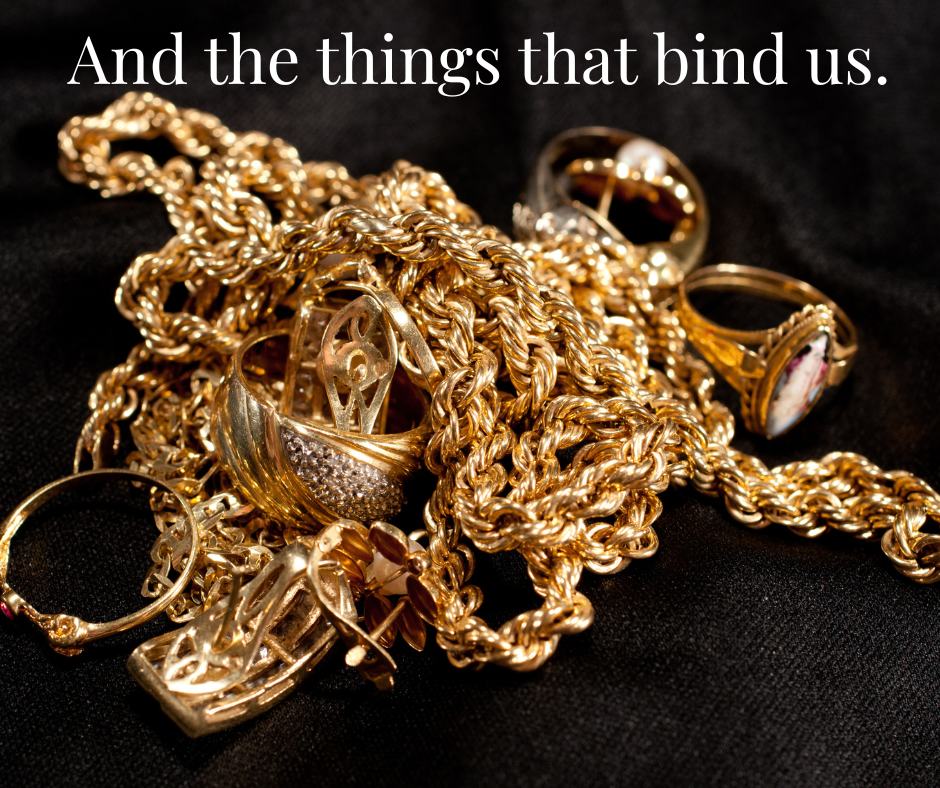TEND: The Things I Saved For Them - Practicing the Swedish Death Cleaning
Last year, my son married his life partner. He wanted to celebrate their union with a Chinese banquet—something rich with tradition and family, something that honored both his identity and his culture. I wanted to give him that. I wanted to give him more.
As the wedding approached, I went to my jewelry drawer to find the gold pieces I’d inherited when I married his father, my first husband. I had protected that jewelry for thirty-eight years—moved it across state lines, through twelve California homes, across cities and decades—always with the quiet hope that one day, I’d pass it down to my children.
But when I opened the drawer, it was gone.
Stolen. Probably sold for a nickel by someone who had no idea what it meant to me—or to the family I had hoped to honor with it.
In that moment, I felt like I had failed. Failed my husband’s family. Failed the tradition. Failed my children. I cried for weeks. I replayed every move, every stranger who had entered our homes. And then I cried some more—not just for what was taken, but for what I had spent nearly four decades protecting.
My current husband, kind and steady, offered to replace it. Buy new jewelry. Something beautiful, something worthy. And in that offer, I felt the smallest bit of relief. I could still give something. Maybe not those things, but something.
Then I remembered—I hadn’t lost everything. I still had a second stash. Pieces from later in life, with stories of their own. I began going through what remained, trying to decide how to divide it among my children. How to give meaning to what was left.
And then something shifted in me.
What if I let go?
What if I stopped treating these things as sacred burdens my children had to carry, and simply gave them what I had—with love, with intention, but without weight?
What if I told them: here is a piece of me. If you lose it, if it’s stolen, if it ends up forgotten in a drawer someday—that’s okay. I won’t haunt you for it. I release you from the pressure of preservation.
Because the truth is, what I wanted to give them all along was not the jewelry. Not the gold.
It was care. History. Love.
And those, as it turns out, don’t live in drawers.
After the wedding, I made another decision.
I started going through all the jewelry I no longer wear—gifts from old loves, impulse purchases, pieces I once treasured but no longer carry meaning. It felt strange at first, opening little boxes that hadn’t been touched in years. Some of them held memories, but most had become weight without warmth.
I realized I didn’t want to die with a drawer full of valuables that meant nothing to anyone but me—or worse, became a burden for someone else to sort through, wondering what was important and what wasn’t.
So I began to let go.
Piece by piece, I’m giving things away, selling what I can, keeping only what still sings to me. What remains is intentional. Lighter. Freer.
In Sweden, they call this döstädning, or death cleaning—the practice of decluttering before you die so that your loved ones aren’t left with the emotional labor of guessing what mattered. It may sound morbid, but I find it liberating. Even loving. It’s a way of saying: I want to leave you stories, not burdens. Meaning, not mess.
Removing attachments to things lifts a burden—for everyone.
The more I give away for someone else to enjoy, the less guilty I feel when I realize I had forgotten about all that stuff in the first place. What I once thought I needed to keep forever now feels like something I’m finally allowed to release.
There’s freedom in knowing that love doesn’t have to be stored to be real. And sometimes, giving something away is the most generous way to keep it.


